Skip Chichen Itza and Discover These Hidden Ruins in Mexico
-
Designed
-
Powered
-
Created
by:
- Designed
- Powered
- Created
Mexico is a land steeped in ancient history and vibrant culture, where every jungle path, sun-baked plateau, and coastal breeze seems to whisper stories of the past. While world-famous sites like Chichén Itzá draw millions of curious travelers each year, the country is also home to a stunning array of lesser-known ruins, places where time stands still and mystery lingers in the air.
With over 1,500 registered archaeological sites and countless others still buried beneath the earth, Mexico offers a vast and diverse tapestry of ancient civilizations to uncover. From towering pyramids hidden in remote jungles to cliffside temples overlooking the sea, these ruins tell the stories of the Maya, Aztec, Zapotec, Mixtec, and many other cultures that once flourished here.
And let’s not forget, Mexico is also home to over 68 living indigenous languages, echoing through markets, ceremonies, and daily life. These languages and traditions breathe life into the ruins, connecting past to present in a way that no museum ever could.
While iconic sites like Teotihuacan and Palenque are rightfully celebrated, this blog takes you deeper, beyond the guidebooks, to uncover the hidden ruins of Mexico that most travelers never see but absolutely should.
Thinking about exploring more of what Mexico has to offer? Be sure to check out our post on 5 Irresistible Reasons to Choose Mexico for travel inspiration that goes beyond the ordinary.
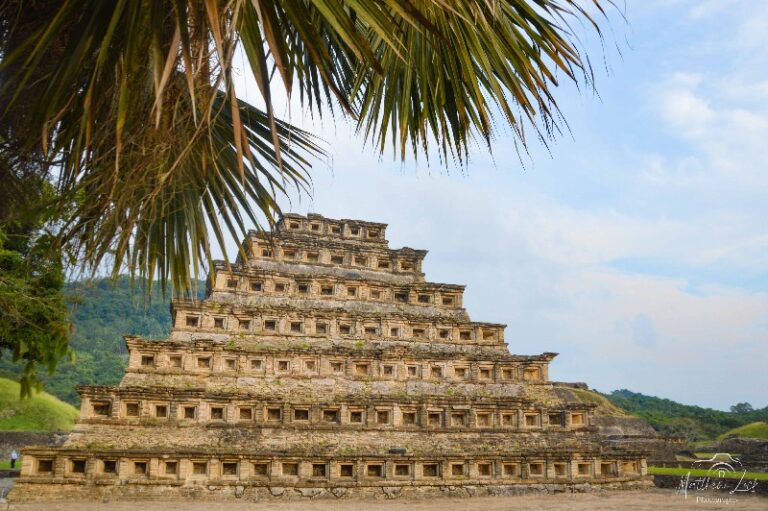
El Tajin
Hidden in the lush hills of Veracruz, El Tajín feels like a lost city reclaimed by the jungle. Unlike the widely recognized ruins of the Maya or Aztec, El Tajín was once a thriving center of the Classic Veracruz culture, flourishing between 600 and 1200 CE. Today, it remains one of Mexico’s most unique and enigmatic archaeological sites and a UNESCO World Heritage Site that often flies under the radar.
Its crown jewel is the Pyramid of the Niches, a remarkable six-tiered structure adorned with 365 carved niches, believed to represent the solar calendar. It’s an architectural marvel that reveals just how advanced and astronomically attuned this civilization truly was.
Nearby, the Ball Courts tell another part of the story. El Tajín has more ball courts than almost any other site in Mesoamerica, and the largest is carved with intricate reliefs depicting ritual games, some of which may have ended in human sacrifice. Eerie? Yes. Fascinating? Absolutely.
What makes El Tajín especially magical is the peaceful atmosphere. Far from the crowds of more famous sites, you can explore its plazas and temples in near silence, accompanied only by birdsong and the distant rustle of wind through the trees

The Great Pyramid of Cholula
At first glance, the town of Cholula in Puebla looks like a quaint colonial town crowned by a hilltop church. But beneath that hill lies a staggering secret, the largest pyramid in the world by volume, completely hidden under layers of earth and time.
The Great Pyramid of Cholula, known locally as Tlachihualtepetl (“man-made mountain”), was built in layers over 2,000 years, starting around 300 BCE. Each generation expanded it, eventually creating a massive structure even larger than Egypt’s Great Pyramid of Giza, though you’d never guess by just looking at it.
Today, visitors can walk through a network of tunnels carved inside the pyramid, offering an incredible look at its different construction phases. Atop the pyramid sits the Iglesia de Nuestra Señora de los Remedios, a 16th-century Spanish church built as a symbol of conquest, literally placed on top of pre-Hispanic foundations.
From the summit, you’re treated to panoramic views of Puebla’s countryside and, on clear days, the smoking Popocatépetl volcano in the distance. The contrast of ancient indigenous roots and colonial history makes Cholula one of Mexico’s most thought-provoking and unforgettable sites.
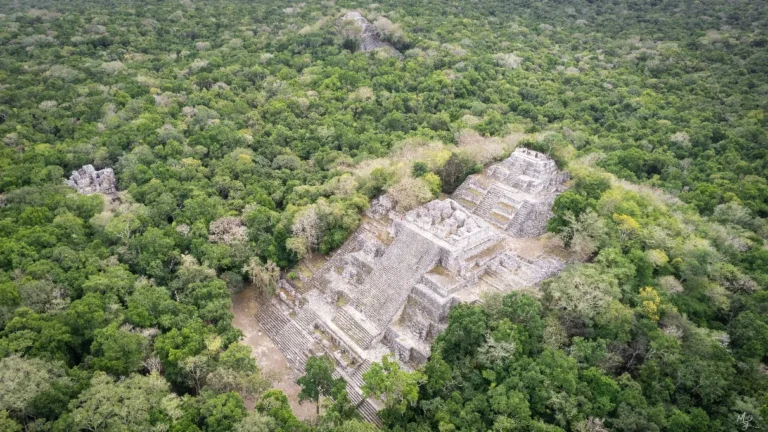
Calakmul
Deep in the dense jungles of Campeche, close to the Guatemalan border, lies Calakmul, one of the most powerful and extensive cities of the ancient Maya world and one of its best-kept secrets.
Spanning over 260 square kilometers (100 square miles), Calakmul was a major rival of Tikal and home to tens of thousands of people at its peak. Today, it’s a UNESCO World Heritage Site surrounded by the Calakmul Biosphere Reserve, one of the largest tropical forests in Mexico.
The Great Pyramid of Calakmul rises above the canopy, offering climbers a jaw-dropping view of the endless jungle. Standing at over 45 meters (148 feet) tall, it’s one of the largest pyramids in Mesoamerica, yet eerily quiet, untouched by mass tourism.
Another treasure is the Palace of the Masks, where ancient stone carvings of Mayan deities still decorate the walls. Getting here requires a two-hour drive down a jungle road, but the journey itself is part of the adventure. Keep an eye out for howler monkeys, toucans, and if you’re lucky, even a jaguar.
For travelers seeking raw, immersive exploration, Calakmul is a once-in-a-lifetime experience.
You may also be interested in: Beyond Cancun: Exploring Mexico’s most beautiful and underrated towns

Coba
Tucked deep in the jungle of Quintana Roo, between Tulum and Valladolid, lies the sprawling ancient city of Coba, one of the most underrated Mayan sites in Mexico. Once a powerful regional capital, Coba was at its height between 600 and 900 CE, and its ruins are spread out across a massive 600 square kilometers.
What sets Coba apart isn’t just its scale, but its sense of adventure. The city is webbed with ancient sacbéob, white limestone roads, that stretch for miles through the jungle. You can rent a bicycle at the entrance and ride these ancient pathways to explore the various structures, ball courts, temples, and stelae scattered throughout the forest. It’s an unforgettable way to experience the site.
The crown jewel of Coba is Nohoch Mul, the tallest pyramid in the Yucatán Peninsula, standing at over 42 meters (138 feet). Unlike most major pyramids in Mexico, you can still climb to the top, a rare and thrilling opportunity. The view from above is breathtaking, with the dense green jungle stretching endlessly in every direction. Just remember: safety first. Take your time, wear good shoes, and don’t take risks for the perfect photo.
Whether you’re cycling past overgrown temples or standing atop the tallest ancient structure in the region, Coba offers a raw, immersive experience that feels closer to exploration than tourism. It’s a must for any traveler craving a bit of wilderness with their history

Palenque
Nestled in the humid, emerald-green rainforest of Chiapas, the ruins of Palenque feel like something out of a dream. This ancient Mayan city was once a royal and ceremonial hub, flourishing between the 7th and 10th centuries CE.
The most iconic structure here is the Temple of the Inscriptions, where archaeologists uncovered the tomb of Pakal the Great, one of the most famous rulers in Maya history. His jade burial mask is legendary and so is the temple that holds it.
Nearby, the Palace of Palenque features elegant courtyards, observatories, and intricate reliefs, giving visitors a glimpse into the sophistication of Maya architecture and royal life. Towering trees and constant birdsong surround the ruins, making Palenque feel alive—like it’s still breathing with history.
The lush setting, atmospheric ruins, and depth of archaeological discovery make Palenque a must-visit for anyone fascinated by ancient civilizations.
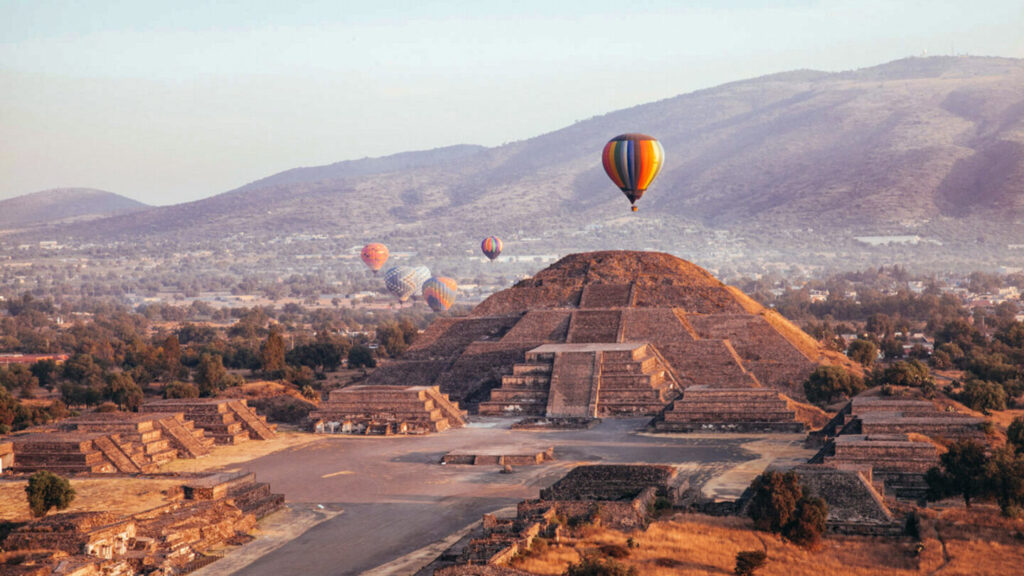
Teotihuacan
Just an hour outside of Mexico City lies Teotihuacan, one of the most awe-inspiring archaeological sites in the world. Once a bustling metropolis of over 200,000 people, it was the largest city in the ancient Americas, yet its original founders remain a mystery.
Walking down the Avenue of the Dead, you’ll pass towering pyramids, ceremonial platforms, and multi-family housing complexes that hint at the complexity of this urban center. The heart of the site is the Pyramid of the Sun, a colossal structure built around 100 CE that offers panoramic views to those who climb its steep steps.
Just to the north stands the Pyramid of the Moon, slightly smaller but no less powerful, aligned with sacred mountains and thought to be used for ritual sacrifices and lunar ceremonies.
Despite being abandoned long before the Aztecs arrived, Teotihuacan remained sacred to them, they called it the “Place Where the Gods Were Born.” Today, it remains just as powerful in its ability to inspire awe.
If you’re visiting Mexico City, Teotihuacan is a perfect day trip and an unforgettable one at that.

Monte Alban
High above the valleys of Oaxaca, the ancient city of Monte Albán commands stunning 360-degree views of the surrounding mountains and farmland. This was once the capital of the Zapotec civilization, a powerful culture that thrived here for over 1,000 years.
Built directly on a flattened mountaintop, Monte Albán is a marvel of urban planning and astronomical alignment. Wide plazas, terraces, tombs, and temples stretch across the summit, offering a peaceful yet powerful glimpse into pre-Columbian life.
The Great Plaza is the heart of the city, surrounded by ceremonial buildings and stelae inscribed with ancient glyphs. From the South Platform, you’ll get one of the best views in all of Oaxaca, especially at sunset.
Monte Albán feels less like a ruin and more like a whisper from the past, perfectly preserved in the quiet air above the valley.

Uxmal
In the Yucatán Peninsula, away from the crowds of Chichén Itzá, lies Uxmal, a majestic Maya city known for its ornate stonework and graceful symmetry. Flourishing between the 6th and 10th centuries CE, Uxmal was part of the Puuc architectural tradition, which emphasized elaborate facades and smooth, rounded shapes.
The Pyramid of the Magician, with its unusual oval base and steep slope, dominates the site and is steeped in local legend, it’s said to have been built overnight by a dwarf magician. Whether myth or metaphor, the structure is undeniably magical.
Another standout is the Governor’s Palace, adorned with more than 20,000 hand-carved stones and aligned with the planet Venus. You’ll also find a large ball court and the Nunnery Quadrangle, a courtyard surrounded by intricately decorated buildings that showcase Uxmal’s artistic finesse.
Uxmal is quieter and more serene than other Yucatán ruins, making it ideal for slow exploration and soaking up the atmosphere.
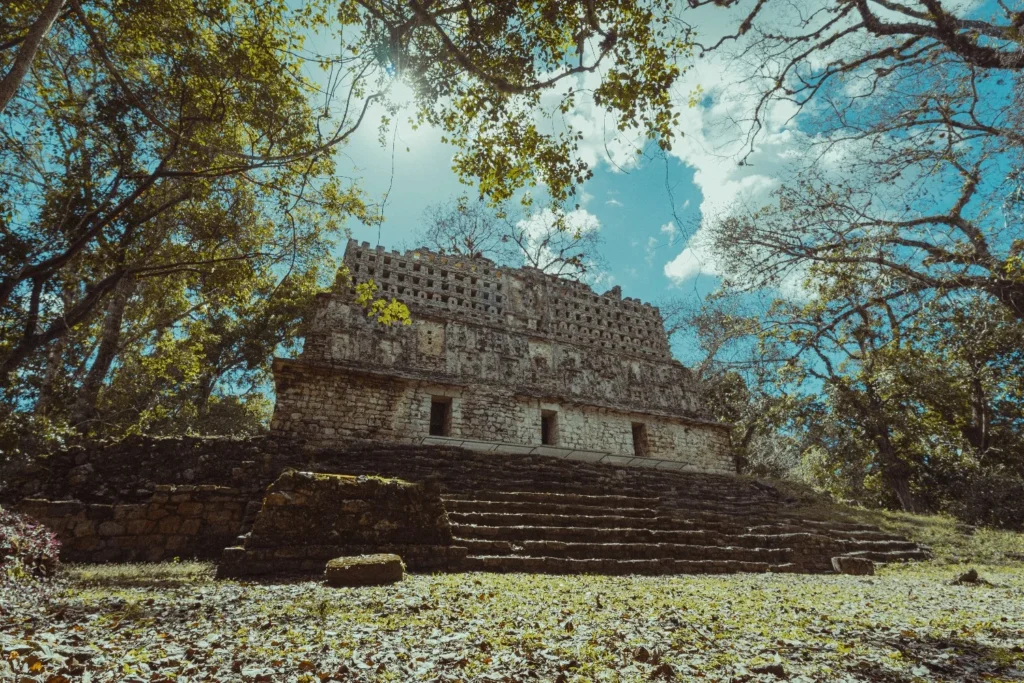
Yaxchilan
Yaxchilan is an ancient city located in the state of Chiapas, Mexico. It was once a major center of the Mayan civilization. The ruins of Yaxchilan are spread out over an area of 6 square kilometers (2.3 square miles).
The most famous building at Yaxchilan is the Temple of the Inscriptions. This temple is named for the hieroglyphic inscriptions that are carved into its walls. The inscriptions tell the story of the rulers of Yaxchilan.
Another popular attraction at Yaxchilan is the Palace of the Masks. This palace is named for the masks that are carved into its walls. The masks are thought to represent the Mayan gods.

My Top Picks – The Ruins That Stole My Heart
Every site on this list has something special, but two in particular stand out as personal favorites: Coba and Calakmul.
There’s just something magical about Coba. I love that you can rent a bicycle and explore the ruins at your own pace, pedaling along ancient Maya roads beneath the jungle canopy. It feels less like sightseeing and more like discovering something hidden, especially when you arrive at Nohoch Mul and realize you can still climb all the way to the top. It’s an experience that’s equal parts peaceful, wild, and exhilarating.
Then there’s Calakmul, which is more than a destination, it’s a true adventure. Reaching the site requires a two-hour drive through dense jungle, but the journey is half the magic. Along the way, the forest comes alive: monkeys leap through the trees, toucans call out from above, and deer cross the path with casual elegance.
While you may not see the full cast of jungle residents, crocodiles, tapirs, ocelots, peccaries, falcons, snakes, coatis, turkeys, herons, bats, even jaguars, you will hear and feel the wildness of the place. Monkeys and toucans are frequent visitors to the ruins themselves, and spotting them amid the mossy temples makes the whole place feel alive.
These two ruins offer more than history, they offer connection, solitude, and a taste of what it means to really explore.
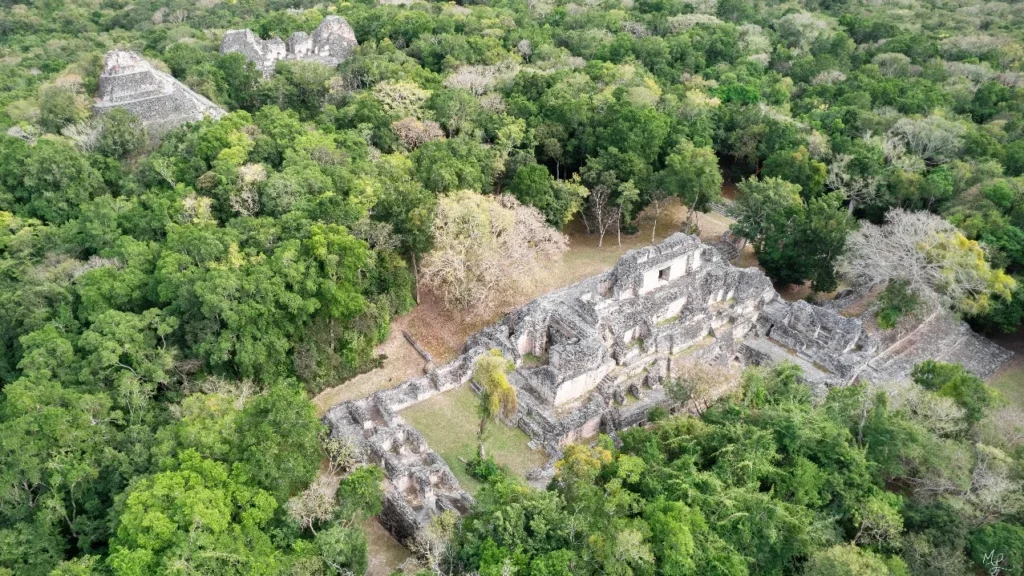
Conclusion
Mexico is a country layered with history, mystery, and cultural richness and its ancient ruins are living proof. From jungle-clad pyramids to mountaintop temples, each site tells a unique story, offering a glimpse into the civilizations that shaped this land long before modern borders existed.
While iconic places like Chichén Itzá and Teotihuacan are absolutely worth seeing, the true magic often lies off the beaten path, in the quiet corners, hidden jungles, and lesser-known ruins that still feel untouched by time.
So if you’re planning a trip to Mexico, don’t just follow the crowd. Venture deeper. Explore slower. Discover the places that most travelers miss and let history surprise you.
You never know what you’ll find until you go looking for it.
If you love Mexican food, be sure to check out my blog post on the “Top 30 Most Popular, Authentic (and Strange) Mexican Foods,” where I delve into the rich culinary traditions of Mexico in greater detail.
Some pictures sourced from pixabay, freepik and pexels.



